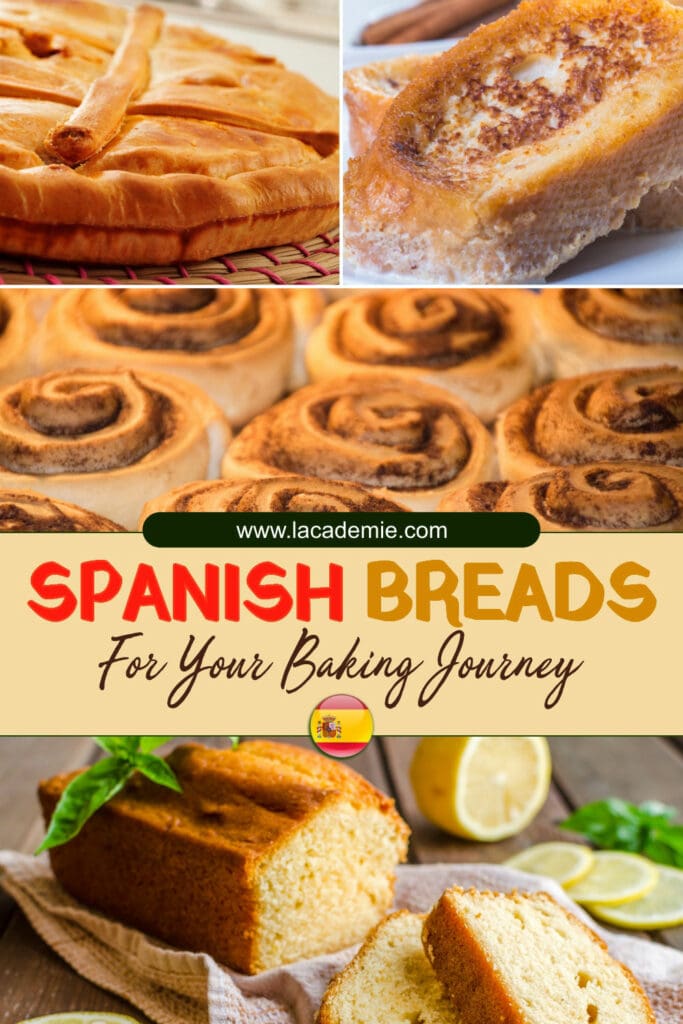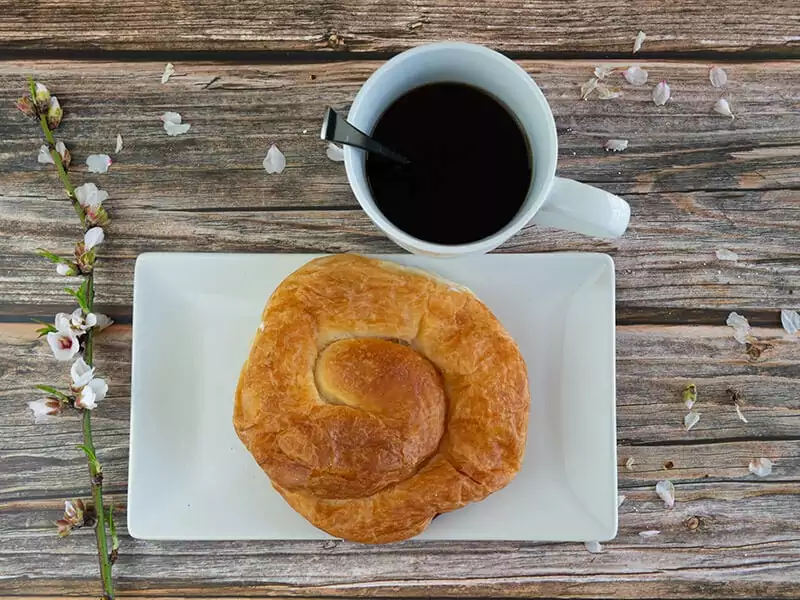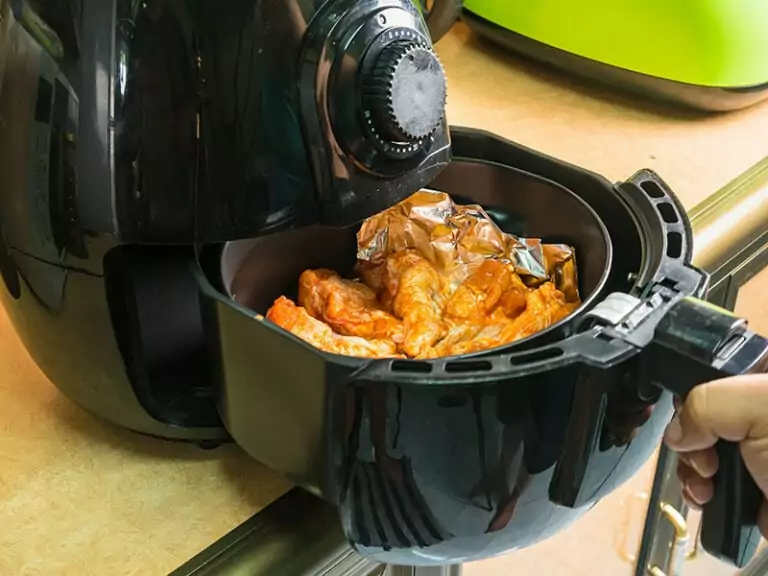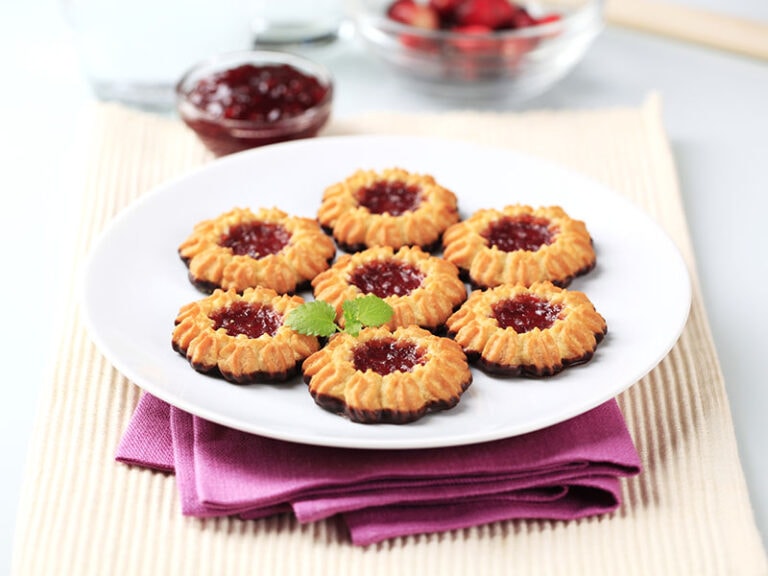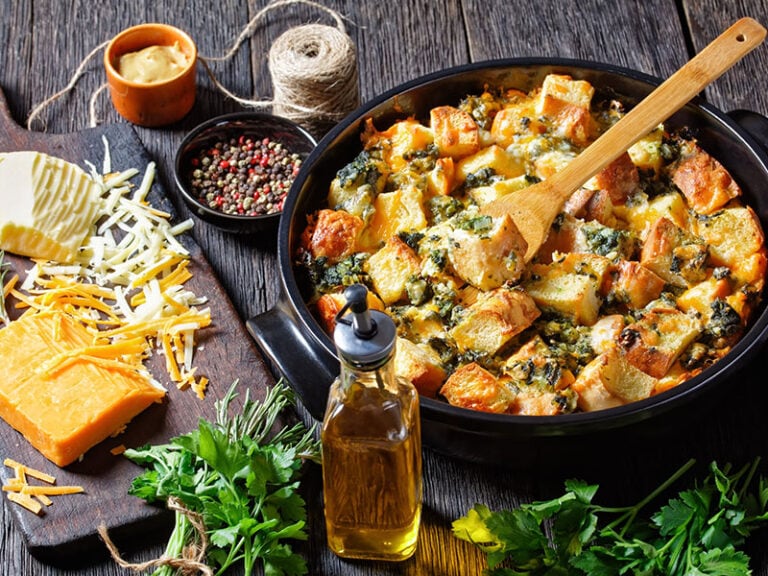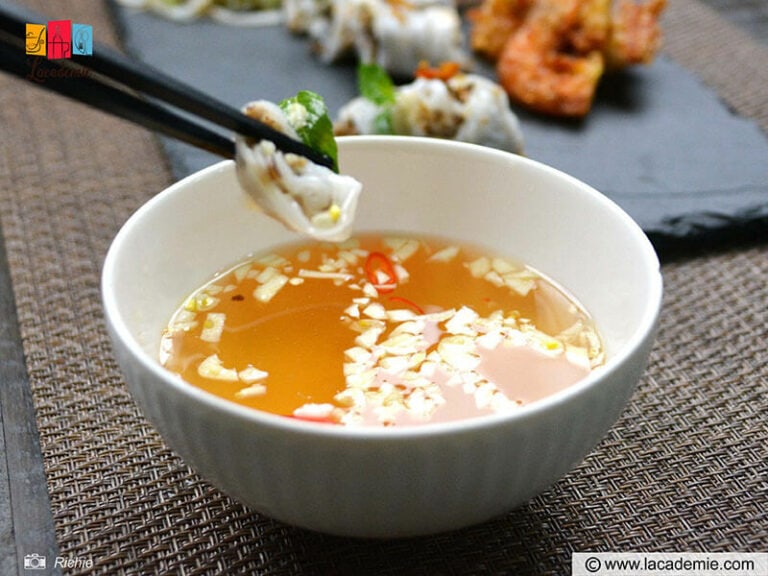Without a doubt, Spanish breads are such an important part of Spain. Before the country even existed, ancient Spaniards knew how to plant and harvest wheat. Thanks to both the Greeks and the Romans, they learned how to bake bread with wheat flour.
And from that point onwards, bread has become inseparable from Spanish cuisine. Due to the influences of both the north and the south, each Spanish region offers its own unique take, creating a diverse list of baked goods.
If this already makes you curious, you’ve come to the right place. With this list below, I want to show you a more ”bready” side of Spanish delicacies, and maybe help you recreate some of these delicacies if you ever desire.
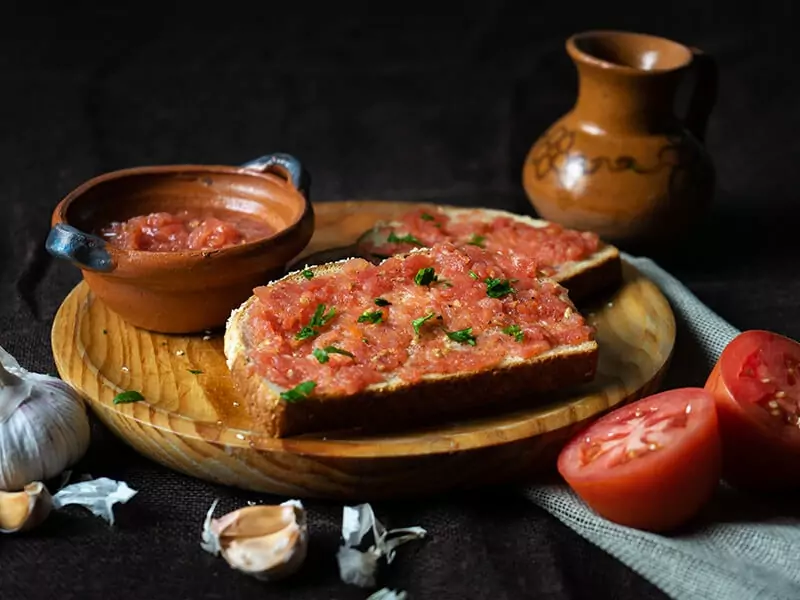
1. Antequera Bread Roll (Mollete)
Total time: 2 hours 25 minutes
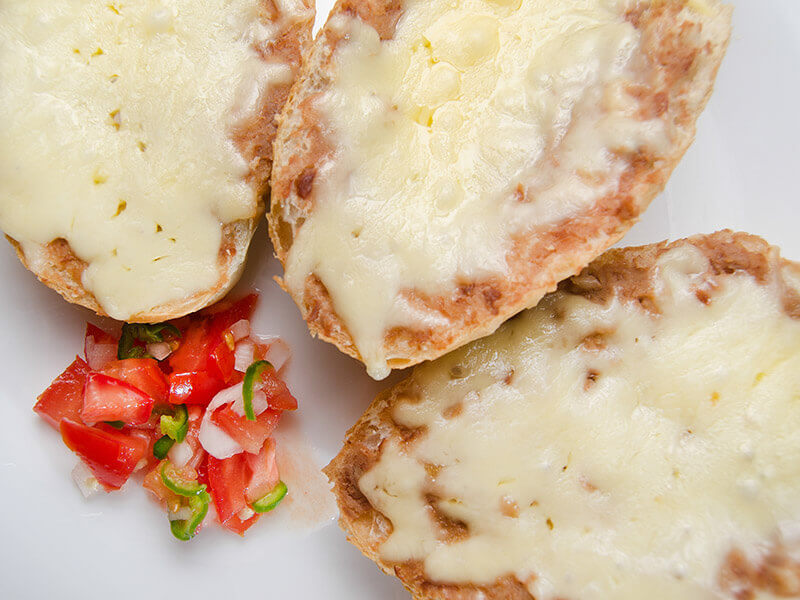
Mollete is a simple bread that originates from the Andalusia region, especially the city of Antequera. That’s why some Spaniards also refer to it as Antequera Bread Roll
Mollete looks fairly similar to an English muffin. In Mexico, there is a delicacy with the same name, but it’s from a loaf called Bolillo.
What you will need to recreate this bread is flour, yeast, and sugar. First, mix the yeast and sugar with warm water. The next step is to put the flour in the bowl before pouring this yeast mixture alongside olive oil. Knead until you form a dough.
The final step is to cut the dough into small round portions, leave them to rise, and bake them. The result will leave with a tray full of fluffy and tasty Mollete. Traditionally, Andalusians just cut the bread in half, spread some olive oil, and add slices of tomatoes.
This Mollete recipe will give you a true Andalusian breakfast experience.
2. Mallorcan Spiral Pastry (Ensaimada)
Total time: 16 hours 55 minutes
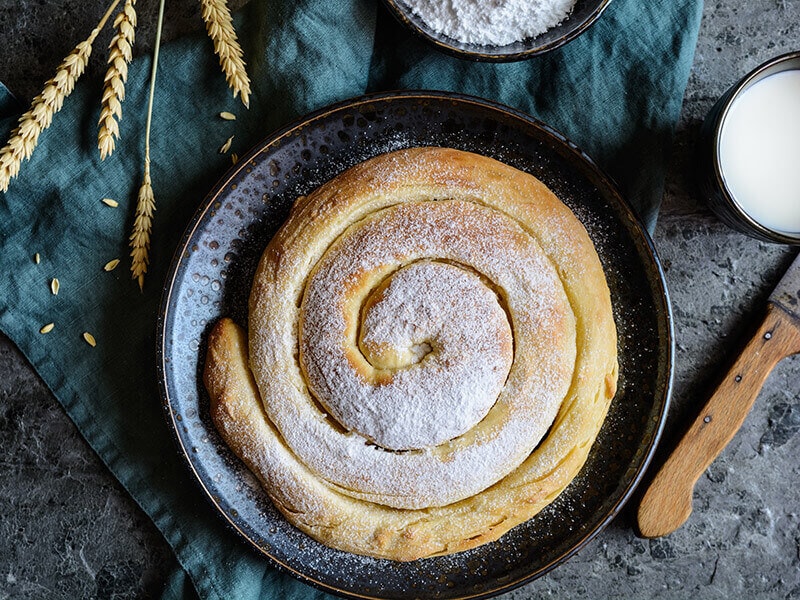
This next entry is a beloved breakfast menu in Spain. Ensaimada, or Mallorcan Spiral Pastry, came from Mallorca around the 17th century. During that time, this type of pastry was popular at many festivals and celebrations.
For the ingredients, you can get eggs, four, and sugar. At the start, make yourself a yeast mixture with yeast and warm water. Then, you combine that with eggs, flour, and sugar to make a nice soft dough.
Roll the dough and cut it into smaller portions. You leave the portions to double in size before rolling them. When the dough becomes oblong, coil it to create the shape of a shell. Rest the dough again before baking. When the exterior turns a little brown, take the Ensaimada out.
The final step is to dust some sugar on top. You find that this dessert is very light from the dough. The sugar dusting adds a hint of sweetness to the bread.
3. Galician Bread (Pan Gallego)
Total time: 2 hours 45 minutes
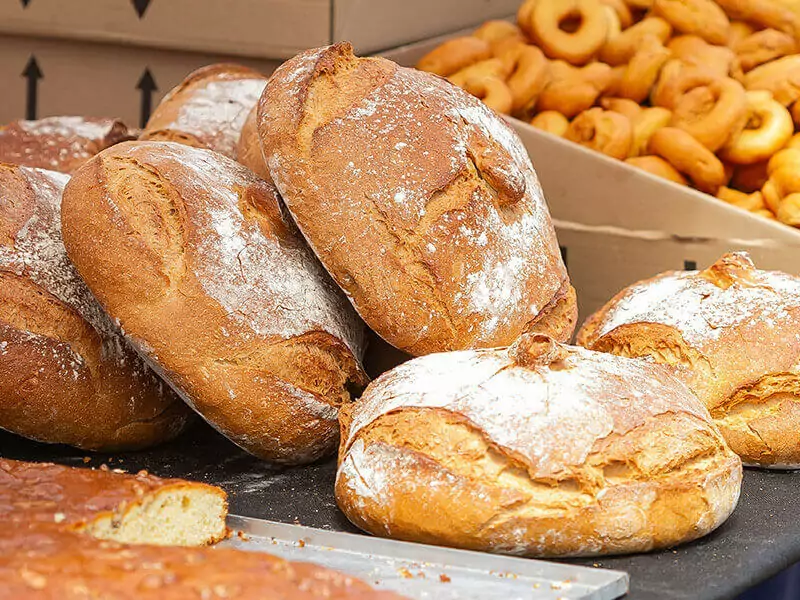
Another type of traditional Spanish bread is the Pan Gallego, or Galician Bread. Based on its name, the origin of this delicacy comes from the Galicia region of northwestern Spain. The bread is known for having many air pockets within the dough.
To make Pan Gallego, these are the required ingredients: flour, yeast, and seed (pumpkin and sunflower). First, you make the dough by combining flour, yeast, and warm water. Knead the dough steadily before adding in the seeds. Then, you leave the dough in a bowl to rise.
When the dough doubles in size, you put it in an oven and bake until Pan Gallego turns slightly golden. What you will get at the end is very crusty on the outside yet soft on the inside. The air pockets make this bread airy. The taste has a slight sourness to it.
4. Sweet Spanish Flatbread (Tortas De Aceite)
Total time: 50 minutes
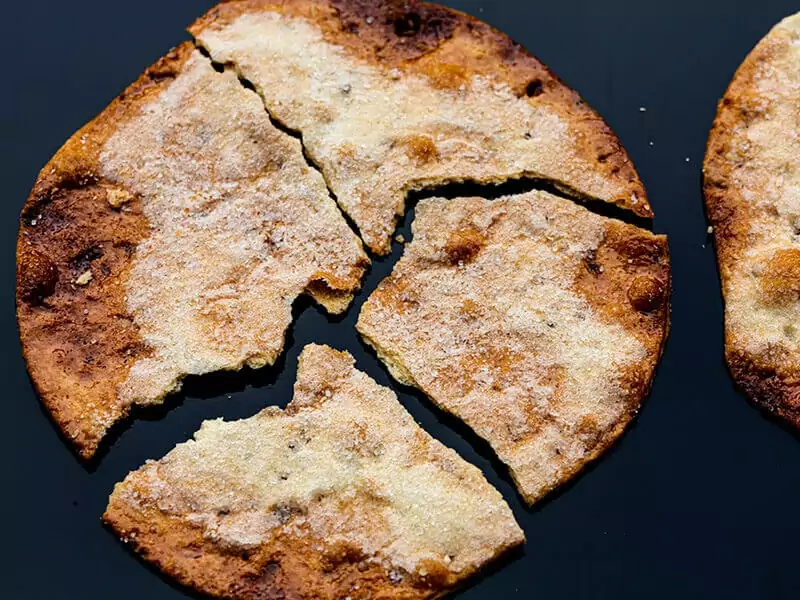
In this entry, I want to move onto a sweeter side of things with the introduction of the Spanish Flatbread, or Tortas De Aceite. This particular crispy bread dates its origin back to Spain’s Moorish age. Since then, Tortas De Aceite has become a staple snack within the region.
The main ingredients you can gather are olive oil, yeast, and flour. The first step is to activate the yeast by mixing it with warm water and sugar. The second thing is to form the dough with yeast mixture and flour. After you have the dough, cut it into smaller portions and flatten them.
The final step is to bake the dough portions until they puff up in the oven. Tortas De Aceite is a great cookie from Spain if you want something a little healthier. It’s sweet, but not too much. Plus, the texture is very addictive, crunchy and airy.
5. Spanish Shortbread (Polvorones)
Total time: 1 hour
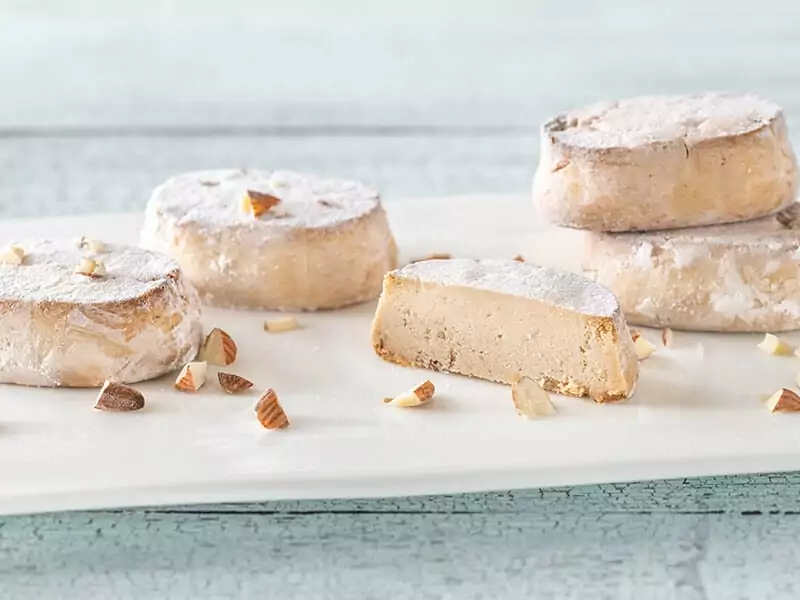
Polvorones, or Spanish Shortbread, are a type of famous Spanish Christmas delicacy. In the Andalusia region, there are over 70 factories producing this snack. The name “Polvorones” comes from the word “polvo”, which means dust or powder.
If you want to make Polvorones, you need flour, almonds, and butter. First, you toast the almonds and grind them into powder. Next, you mix the butter with sugar and cinnamon. After that, you mix the ground almonds with flour and the butter mixture.
This will create a dough that you can knead. Once you’re done, cut the dough into round pieces before baking them. When the Polvorones puff up in the oven, you take them out. The brown outer layer gives way to a more crumbly inside. This dessert goes well with some sugar on top.
This tutorial will help you make Polvorones for your next Christmas party.
6. Spanish Sponge Cake (Sobao Pasiego)
Total time: 25 minutes
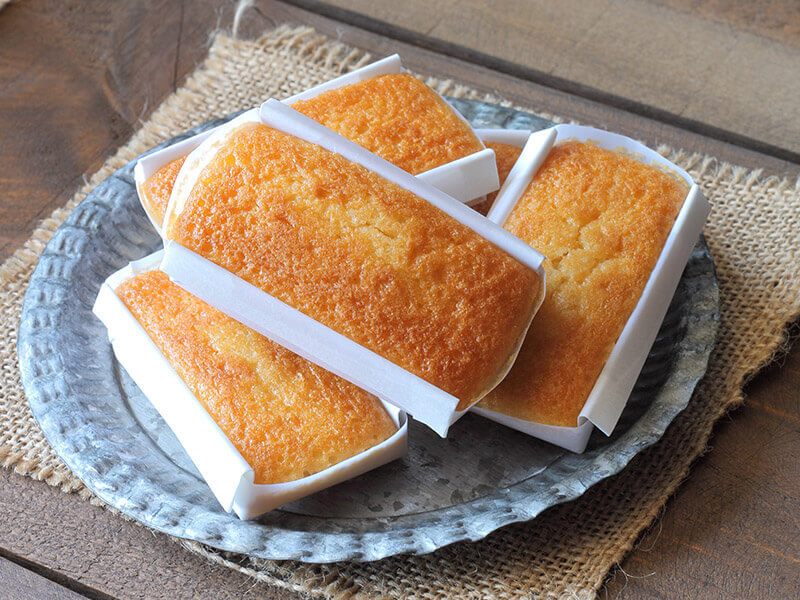
Another sweet type of delicacy that I want to show you is the Sobao Pasiego or the Spanish Sponge Cake. This dessert comes from the region of Cantabria, northern Spain. Despite its name, Sabao Pasiego is similar in texture to bread due to its ingredients.
In order to make Sobao Pasiego, you must get the ingredients, including dough, lemon zest, and rum. The first is to make the dough with sugar, egg, and flour. You also add butter to the dough as well. After whisking everything together, put in a bit of rum and lemon zest.
Pour the batter into either a paper mold or a baking tin and bake the Sobao until it turns brown on the outside. The cake has a very porous and elastic texture, hence the name “Sponge Cake”. On the inside, the dough is nice and soft, similar to the inside of normal bread.
7. Galician Turnover Bread (Galician Empanada)
Total time: 3 hours
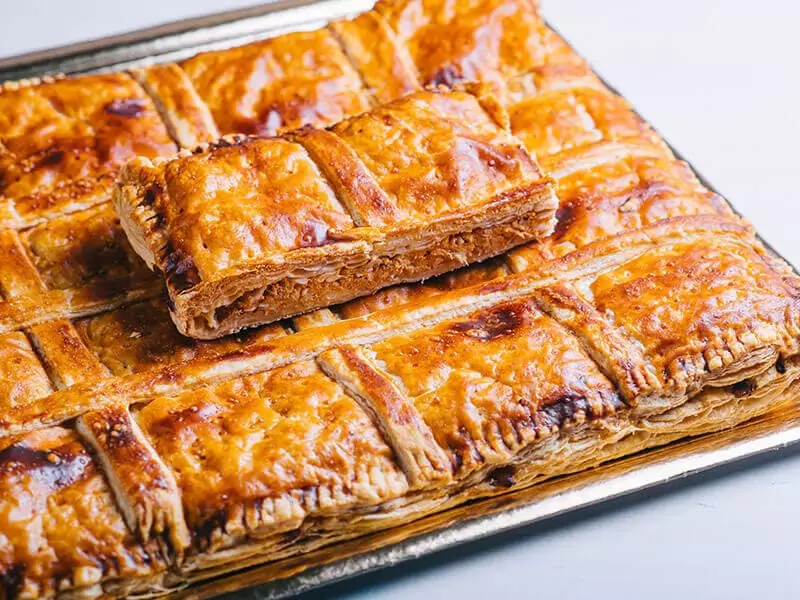
Empanadas, or Spanish Turnover, is synonymous with Spanish culture. It is a type of pastry that consists of bread dough covering a type of filling. It can be sweet or savory. But did you know that the original specialty from the Galicia region of Spain has a different look?
Instead of looking like a seashell, this version looks like a flat sandwich. Let me show you how to make it. First, you must gather the necessary ingredients like bread dough and tuna filling. For the dough, you mix together flour, salt, and yeast. You can also add water and olive oil.
For the tuna filling, combine tuna, chopped green peppers, and garlic on a heated pan. After you finish with both parts of the ingredients, place a layer of dough on a tray, spread the filling across the dough, and close it with another layer. Bake until everything turns a nice brown.
When you take it out of the oven, you will get a crispy tray of original Empanada. The thick crust provides such a unique texture. The tuna filling has a salty and fresh flavor to the whole dish.
8. Tomato & Bread (Pan Con Tomate or Pa Amb Tomaquet)
Total time: 10 minutes
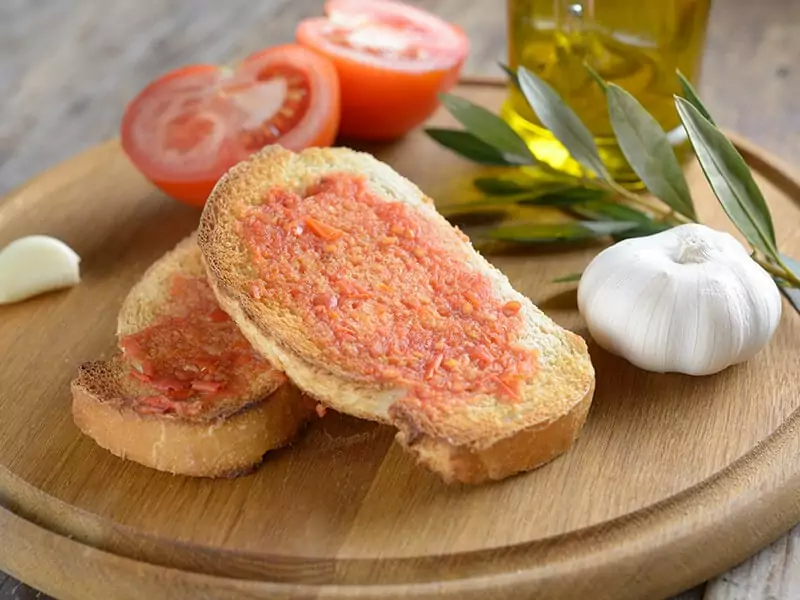
One of the most interesting parts about Spain is its Tapas cuisine, which is a type of Spanish starters. And one of the most popular Tapas specialties in the country is Pan Con Tomate, or simply Tomato & Bread.
Pan Con Tomate arrived from the Catalonia region in the 19th century with the local name Pa Amb Tomaquet. Thanks to its simple recipe, the popularity of this delicacy soon spread throughout Spain.
In order to make Pan Con Tomate, you should have a slice of bread, tomatoes, and olive oil. First, slice the bread before brushing olive oil on the top. You can toast the bread first if you want. Next, you will grate the tomatoes to turn them into a pulp. Season the pulp with salt.
The final step is to spread this tomato mixture on top of the bread. The umami and slight saltiness from the tomatoes create a great flavor. On top of that, a single bite of tomatoes and bread gives a delectable texture to the whole experience.
This tutorial will show you why Pan Con Tomato is a phenomenon in Spain.
9. Spanish Pizza (Coca)
Total time: 1 hour 30 minutes

Another bread-based delicacy from the eastern side of Spain is the Coca, or what I like to call Spanish Pizza. In Catalonia, Coca is made specifically for many festive seasons. This type of dish is available in a variety of styles, from sweet to savory.
In this recipe, I will show you a version of sweet Coca. These are what you should get to prepare the dessert: flour, sugar, and yeast. These three will make a really nice dough when you mix them together with warm water. Leave the dough to rise in size.
After the dough puffs up, cut it in half and transfer both parts to a baking tray. Put sugar and honey on top before baking in an oven. After the dough hardens, take the Coca out and drizzle with honey as garnish. The finished product is a very crunchy Coca with a lot of sweetness.
10. Spanish Easter Bread (Hornazo)
Total time: 3 hours 35 minutes
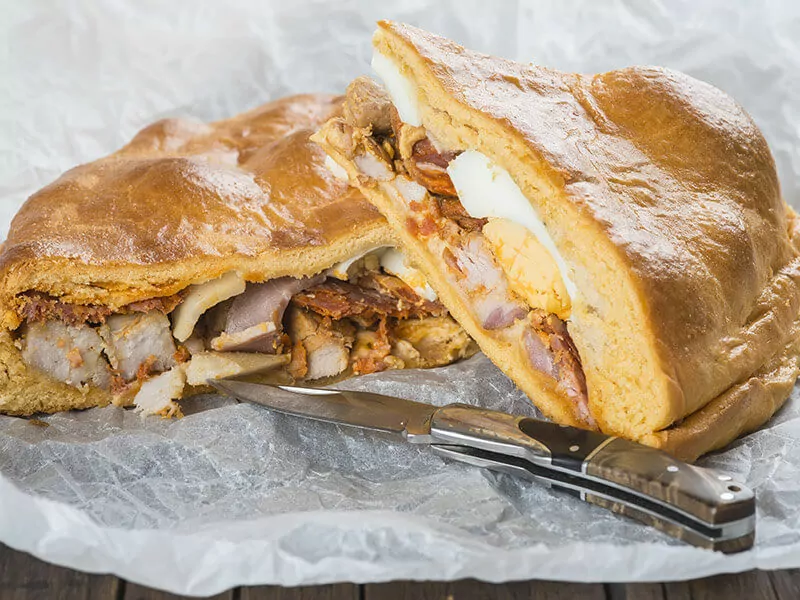
Hornazo, or Spanish Easter Bread, is a very interesting part of the lore of the town it hails from, Salamanca. Students there made Hornazo to celebrate the return of prostitutes during Easter Monday, which follows the end of Lent, an important religious event.
The reason for this strange practice is due to fact that the male population had to abstain from sex during Lent. So that led to prostitutes being banished to the other side of Tormes River during the event.
To make Hornazo, you must have both dough and filling. For the dough, you combine yeast mixture, flour, and butter until there is a thick dough. The filling varies between regions, but this recipe usually requires bacon, chorizo, and eggs. Place the filling in the middle of the dough.
Bake the dough until you see the edge crisps up before taking the Hornazo out. When you bite into the pastry, the bread makes a good crunch that will stay in your mind for a long time. Plus, the savory filling acts as the perfect accompaniment to the outer bread.
11. Spanish Toast (Torrijas)
Total time: 10 minutes
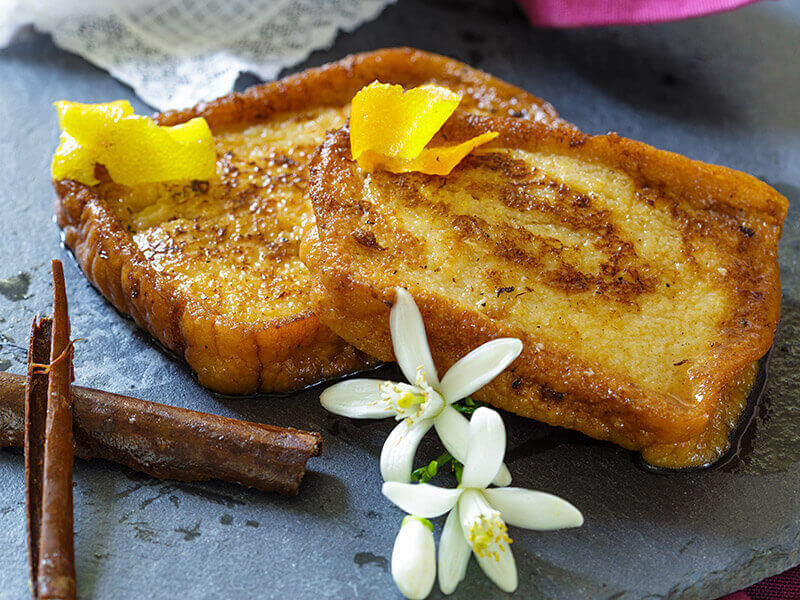
Another type of Spanish bread-based recipe that you will find around the time of Easter is Torrijas, or the Spanish Toast. It’s quite similar to the French Toast, but you will find that this dessert is more than just an imitation upon a closer look.
There are two types of Torrijas: Torrijas De Leche (which uses milk as the dipping liquid) and Torrijas De Vino (which uses wine). For today’s recipe, I will show you the Torrijas De Leche version.
First, you get all the necessary ingredients, including bread and the dipping liquid. To make the liquid, combine warm milk and vanilla in one bowl. In another bowl, whip an egg. Dip the bread into the liquid and the egg before frying.
When the bread turns brown, take it out and sprinkle some sugar on top. What you have at the end is a very crunchy, milky, and sweet dessert. The aroma from the vanilla also adds a good touch to the texture.
This is how you can make Torrijas, the great Spanish snack.
12. Spanish Almond Bread (Mazapan)
Total time: 1 hour 20 minutes
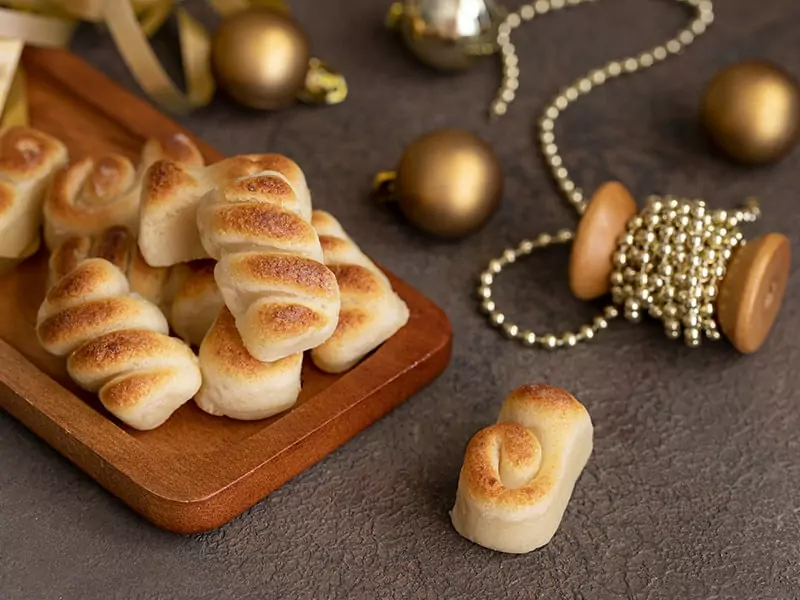
Mazapan, or Almond Bread, is a famous Spanish sweet treat, especially during Christmas. Like many exotic foods in Spain, it is part of Andalusian culture. According to popular belief, Mazapan might have arrived in Spain with Muslim people around the 8th century.
The ingredients for the recipe are almond flour, sugar, and eggs (separate egg whites and yolks). The first thing to do is create a dough by combining almond flour, sugar, and egg whites. Refrigerate the dough for an hour before cutting them into smaller shapes.
The final steps are to brush egg yolks on the dough and bake them. When you see the Mazapan turn light brown, take them out. Mazapan is a very crumbly snack. It has a hint of nuttiness to the taste. The egg whites help fluff up the dough inside, creating a great texture.
Nutrition Facts
5 servings per container
- Amount Per ServingCalories284
- % Daily Value *
- Total Fat
6.3g
10%
- Saturated Fat 0.9g 0%
- Sodium 476mg 20%
- Potassium 103mg 3%
- Total Carbohydrate
49.1g
17%
- Dietary Fiber 2.5g 8%
- Sugars 3.3g
- Protein 8.7g 16%
- Vitamin C 3%
- Calcium 31%
* The % Daily Value tells you how much a nutrient in a serving of food contributes to a daily diet. 2,000 calories a day is used for general nutrition advice.
